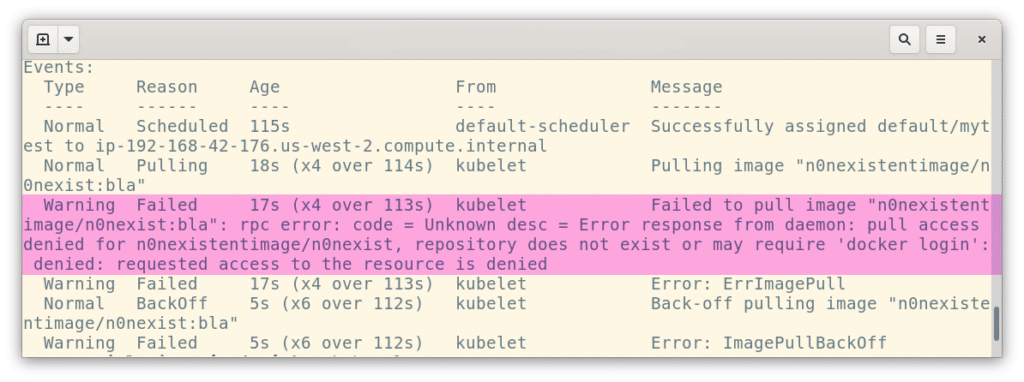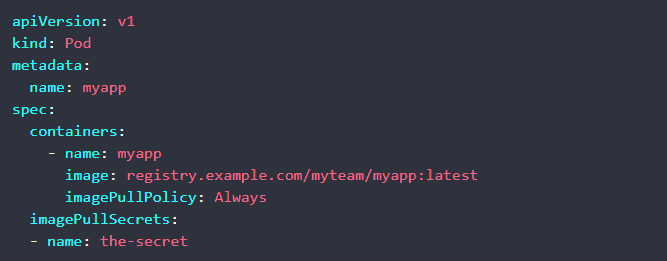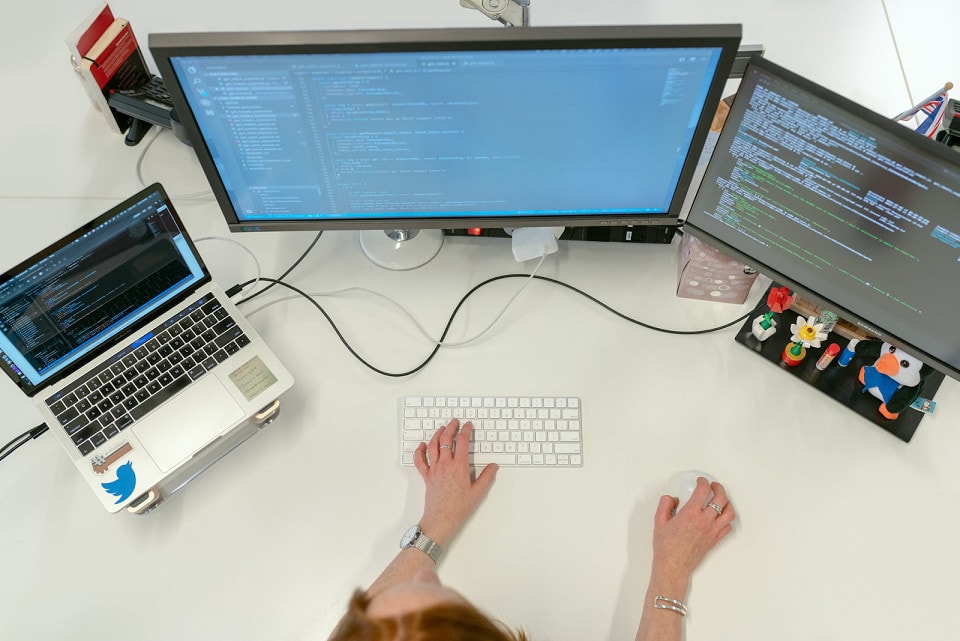If you use Kubernetes or K8s, you’ve likely encountered one of the most common errors: ImagePullBackOff.
Dealing with the ImagePullBackOff error can be frustrating and tedious if you’re unfamiliar with the issue.
Plus, Kubernetes has a massive ecosystem.
Without the proper knowledge, tracking down the source of the problem can be like finding a needle in a haystack—even if you deploy full-stack monitoring solutions for your modern applications.
The good news is that we’re here to help.
This guide covers what you need to know about preventing and troubleshooting the ImagePullBackOff error in Kubernetes.
What does the Kubernetes ImagePullBackOff mean?
The ImagePullBackOff status means that a Pod could not start because Kubernetes failed to pull a container image.
The BackOff part in the status means that Kubernetes will continue to try pulling the image with an increasing delay (hence, BackOff).
Let’s break this down further.
In Kubernetes, an agent in each node (called the kubelet) is responsible for running containers in the node and pulling the image.
You can think of several warehouses, where each warehouse (node) includes one forklift (kubelet) that lifts and runs the container.
Since the kubelet is responsible for the containers running on that node, it reports what happens back to the central Kubernetes API.
Then, the kubelet will instruct the container runtime to pull the container image if it doesn’t already exist on a Node.
If something keeps the container runtime from pulling an image onto the node—which Kubernetes has scheduled your pod—the kubelet will report back ErrImagePull and then ImagePullBackOff (and will keep trying).
Essentially, the ImagePullBackOff error indicates that something keeps Kubernetes from pulling the image you want onto a specific node.
Root causes of the ImagePullBackOff error
Fixing the ImagePullBackOff Kubernetes error requires understanding what caused the issue.
Some of the most common causes of the ImagePullBackOff error include the following.
Using a private registry without giving the necessary credentials
Many enterprises often use Kubernetes with a private container image registry to keep internal apps non-public in container image libraries.
If you want to pull an image from private registries, ensure you provide Kubernetes with the necessary credentials that allow it to fetch the image.
You’ll need to create a secret in Kubernetes—a means to store sensitive information such as an SSH key or OAuth token.
You will also need to create a secret when pulling from:
- Publicly accessible but password-protected registries
- Private images on GitHub Container Registry, Google Container Registry, and others
Referencing a tag or an image that doesn’t exist
Creating a pod that references a non-existent image or tag is one of the most common causes of the ImagePullBackOff error, and it’s often the result when you make a typo.
There can also be instances when the image should exist , and you use the right name, but the tag might be retired.
If you’re following an old book or tutorial that references a specific image tag, check if the tag still exists.
If the tag no longer exists, find the replacement tag you’re better off using to keep you from encountering the ImagePullBackOff error.
Getting blocked by the registry and other issues
Some registry libraries have rate limits.
Once you reach the maximum allowed download limit, the registry can block you, which might cause the ImagePullBackOff error.
You’ll need to sign up for an account or look for another place to get your image from.
The ImagePullBackOff error can also occur if you don’t properly set up the SSL/TLS authentication that the registry requires.
4 ImagePullBackOff Kubernetes troubleshooting tips
Below are several ways to investigate and fix the ImagePullBackOff error.
1. Use kubectl describe
One of the initial steps to find the root cause and fix the ImagePullBackOff error is to use kubectl describe.
Doing so can show you the full error log, helping you see the possible cause of the issue.
For instance, if you have a pod referencing an image that does not exist, you’ll get an Events output from kubectl describe <pod name> that looks something like this:

Based on the events shown above, the error clearly shows that you got the name wrong in this scenario, causing the ImaePullBackOff Kubernetes issue.
2. Check your pod and secret if you use a private registry
If you are pulling images from private registries, ensure you create a secret that contains the necessary credentials to access the registry.
Additionally, make sure you add the secret in the correct namespace.
You’ll also have to configure the imagePullSecrets field on your pod. The field tells Kubernetes which specific secret it should use when authenticating to the registry.
It should look something like this.

3. Assess the extent of the issue
Figure out the exact root of the problem by considering the following:
- Are there other pods already running on a specific node? If the node is already running other pods without any issues, it should work well since the node is pulling from the same registry. Investigate what makes the pod different to help determine the root cause of the ImagePullBackOff error.
- Can the node (in the cluster) pull the image? Consider jumping on to the node through SSH and checking if you can run a docker pull and get the image.
- Are you able to pull the image locally? Pull the image from your workstation and if it doesn’t work, try podman pull or docker pull to see if you can fetch the image. Doing so can give you a clue as to why pulling the image locally fails.
4. Increase the kubelet log levels
If you can access the nodes themselves, get more information by raising the log levels on the kubelet.
You’ll have to set the — v parameter, which modifies the log level verbosity.
Get to the bottom of ImagePullBackOff Kubernetes errors
While various reasons and factors can cause ImagePullBackOff errors, fixing the issue doesn’t have to be rocket science.
Start by investigating and reading the error message and following the tips in this guide.


